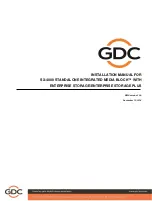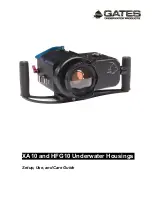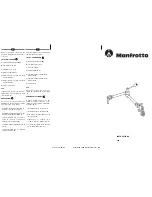
H
I
R
OLLER
- B
ELT
C
ONVEYORS
4. A
PPLICATION
D
ESIGN
C
ONSIDERATIONS
H
I
R
OLLER
, M
INI
R
OLLER
, L
O
R
OLLER
& H
I
L
IFE
4.3. D
ISCHARGE
C
ONSIDERATIONS
P115506 R3
29
• take-up section - clearance to access take-up rods
• head section - much wider than standard trunking sections
• motor and drive - depending on type, much wider than head section
• tripper sections - much wider than standard trunking sections
• bottom clearances for cleaning and bottom removal
• inspection doors and top cover removal
• tail cover and inspection door removal
4.3. DISCHARGE CONSIDERATIONS
•
Spouting angles:
Materials flow differently in spouting. The proper angle
must be maintained so that the material will freely flow in the spout.
•
Spouting sized properly:
Flow characteristics are different for each type of
material. Properly sized spouting must be installed to handle the capacity of
the discharge flow from the conveyor.
4.4. INCLINES
•
Gradual:
Hi Roller Conveyors can be installed with a gradual up-bend. This is
the lowest cost, horsepower, and maintenance option. Hi Roller's engineering
department must complete design calculations to determine the amount of
gradual up-bend that can be installed on a specific application.
•
Sharp up-bends:
Hi Roller Conveyors can be installed with a sharp up-bend
section. This is the highest cost, horsepower, and maintenance option. Hi
Roller's engineering department must complete design calculations to deter-
mine the amount of increased horsepower and cost of this option for a spe-
cific application.
•
Horsepower:
Inclined conveyors of any type require additional horsepower.
A straight, gradual or sharp up-bend inclined conveyor will require additional
horsepower to simply lift the material. This additional horsepower will be cal-
culated by Hi Roller's engineering department.
•
Capacity:
Inclined conveyors of any type will not convey the same amount of
material as a flat horizontal conveyor. Hi Roller's engineering department will
calculate the capacity of a specific application.
4.5. TRUNKING INSTALLATION
Important:
Trunking MUST be installed straight.
Check trunking installation with laser, transit, or wire line to ensure it is installed
in a straight line. Trunking that is not installed straight will cause belt tracking
problems.
















































